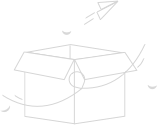-
V-ing做状语
普通类 -
- 支持
- 批判
- 提问
- 解释
- 补充
- 删除
-
-
V-ing做状语
动词-ing做状语
动词-ing在语法功能上相当于动词、形容词和副词。现在分词通常和逻辑主语之间存在主动关系。但要注意它的各种形式变化:
主动形式
被动形式
一般式
V-ing
being V-ed
完成式
having V-ed
having been V-ed
Hearing the bell, the students began to enter the classroom.
(听见和进入两个动作同时发生。)
The building being built now is our new library.
(being built为现在分词的被动形式,表示动作正在进行之中。)
Having done the work, he went home.
完成了工作,他就回家了。
现在分词作状语往往和逻辑主语之间存在主动关系。现在分词作状语,常常用来表示原因、时间、方式、结果、条件、伴随状况等。现在分词一般不用作表目的的状语(通常用不定式表目的状语)。
1、表时间状语
Walking in the street, I came across an old friend of mine.
=When I was walking in the street, I came across an old friend of mine.
While waiting for the bus, he read a copy of China Daily.
=While he was waiting for the bus, he read a copy of China Daily.
2、表原因状语
Being ill, he didn’t go to school.
=Because / As he was ill, he didn’t go to school.
Being a student, you should study hard.
=Since you are a student, you should study hard.
Thinking he might be at home, I called him.
=As I thought he might be at home, I called him.
3、表方式、伴随情况地状语
作伴随状语地分词表示的动作,必须是主语的一个 动作,或是与谓语所表示的动作(或状态)同时发生,或是对谓语表示的动词(或状态)作进一步地补充说明。
He sat on the sofa, watching TV. =He sat on the sofa, and watched TV.
他们笑着谈着走进了教室。
Laughing and talking, they went into the classroom.
他斜靠(lean)着墙站着。
He stood leaning against the wall. =He stood and leaned against the wall.
4、表结果
Her mother died in 1990, leaving her with her younger brother.
=Her mother died in 1990, and left her with her younger brother.
全国到处在传唱这首歌曲,使它成了一首最受欢迎的歌曲。
The song is sung all over the country, making it the most popular song.
5、表条件
Using your head, you will find a way. =If you use your head, you will find a way.
一直往前走,你就会看到一座白色的房子。
Walking ahead, you will see a white house.
6、与逻辑主语构成独立主格
All the tickets having been sold out, they went away disappointedly.
所有的票已经卖光了,他们失望地离开了。
Time permitting, we'll do another two exercises.
如果时间允许,我们将做另两个练习。
有时也可用with (without) +名词(代词宾格)+分词形式
With the lights burning, he fell asleep.他点着灯睡着了。
7、作独立成分:
Judging from (by) his appearance, he must be an actor.
从外表看,他一定是个演员。
注:-ing形式作状语时,它的逻辑主语必须与主句的主语是一致的。
Time permitting, I will pay a visit to the whole city.
(分词的逻辑主语是time,而句子的主语是I,两者不构成主谓关系,所以只能用独立主格结构,也就是给现在分词补充一个主语。)
-
-
- 标签:
- 教学
- 独立
- 表示
- 时间
- 逻辑
- 形式
- 现在
- 主语
- 状语
- 跨越式
- 分词
- 动作
-
加入的知识群:

.jpg)

学习元评论 (0条)
聪明如你,不妨在这 发表你的看法与心得 ~